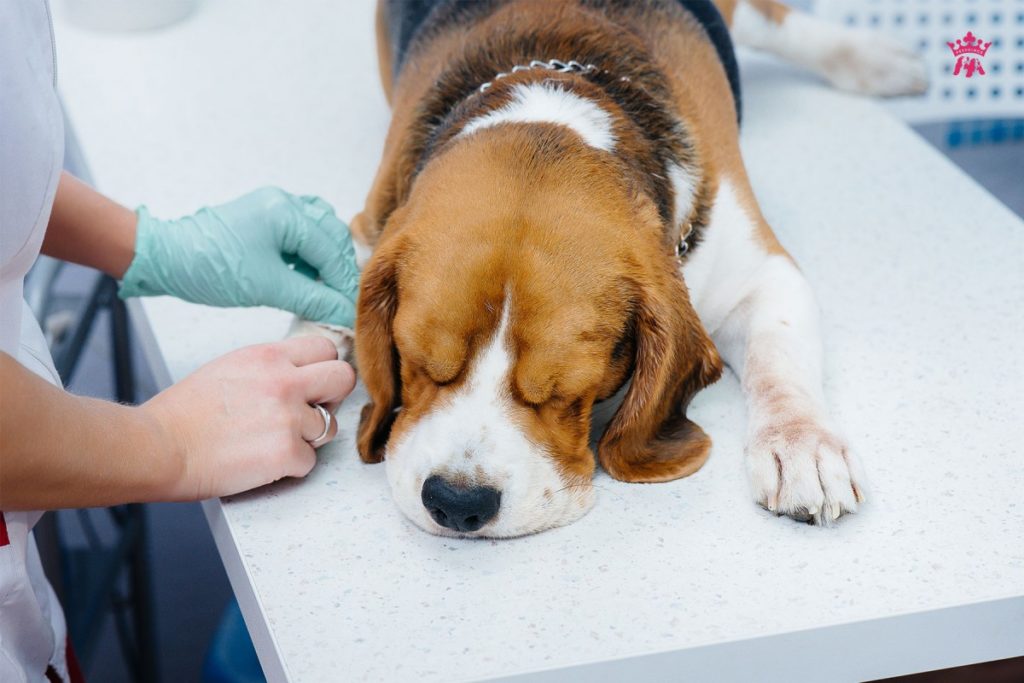Winter can be a magical time for humans, with snow-covered landscapes and cozy nights by the fire. However, for our dogs companions, it can bring about a whole host of challenges and health concerns. As pet owners, it is our responsibility to ensure that our furry friends are well taken care of during the colder months. In this article, we will discuss some common problems that dogs face in the winter and how to prevent and treat them.
1. Frostbite and Hypothermia: The Dangers of Extreme Cold

Signs and Symptoms:
- Pale, gray, or blue skin
- Shivering or trembling
- Sluggishness or lethargy
- Stiff joints or muscles
- Ice crystals on fur or skin
Winter weather can be harsh, especially for dogs that are not used to extreme cold. Just like humans, dogs are susceptible to frostbite and hypothermia when exposed to freezing temperatures for extended periods. Frostbite occurs when the body’s tissues freeze, causing damage to the skin and underlying tissues. Hypothermia, on the other hand, is a drop in body temperature that can lead to serious health complications if left untreated.
To prevent frostbite and hypothermia, it is essential to limit your dog’s exposure to extreme cold. If you have a small or short-haired breed, consider investing in a warm coat or sweater to keep them warm during walks. It is also crucial to dry your dog thoroughly after they come inside from the cold, as wet fur can quickly lead to hypothermia. If you suspect that your dog may have frostbite or hypothermia, seek veterinary attention immediately.
2. Dry, Flaky Skin: Combatting Winter Itch
Causes:
- Low humidity levels
- Frequent baths
- Poor diet
- Allergies
Just like humans, dogs can also suffer from dry, flaky skin during the winter months. This condition, also known as “winter itch,” is caused by a combination of factors, including low humidity levels, frequent baths, and poor diet. Dry skin can be uncomfortable for your dog and may lead to excessive scratching, which can cause further irritation and even infection.
To prevent dry skin in your dog, it is crucial to keep them well-hydrated and ensure that they have access to fresh water at all times. You can also invest in a humidifier to increase the moisture levels in your home. Additionally, try to limit baths to once every few weeks, as frequent bathing can strip your dog’s skin of its natural oils. If your dog has allergies, consult with your veterinarian for proper treatment and management.
3. Paw Pad Injuries: Protecting Your Dog’s Feet

Types of Injuries:
- Cracked or dry paw pads
- Cuts or scrapes
- Frostbite
- Chemical burns
During the winter, your dog’s paws are exposed to a variety of hazards, including ice, snow, salt, and chemical deicers. These substances can cause damage to your dog’s paw pads, leading to pain, discomfort, and potential infections. To protect your dog’s feet, consider investing in booties or paw wax to provide a barrier between their paws and the cold ground. After walks, make sure to wipe your dog’s paws with a warm, damp cloth to remove any debris or chemicals that may have accumulated.
4. Seasonal Affective Disorder (SAD): Recognizing the Signs
Signs and Symptoms:
- Lethargy
- Loss of appetite
- Changes in behavior
- Excessive sleeping
- Irritability
Seasonal Affective Disorder (SAD) is a type of depression that is triggered by changes in the seasons. While it is more commonly associated with humans, dogs can also experience SAD during the winter months. Dogs that are affected by SAD may exhibit signs of lethargy, loss of appetite, and changes in behavior. If your dog seems down or depressed during the winter, try to provide them with extra love and attention. You can also consult with your veterinarian for additional treatment options.

5. Holiday Hazards: Keeping Your Dogs Safe During Festive Celebrations
Common Hazards:
- Toxic foods (e.g., chocolate, grapes, onions)
- Decorations (e.g., tinsel, ornaments)
- Candles and open flames
- Cold weather hazards (e.g., antifreeze, ice melt)
The holiday season is a time for celebration, but it can also bring about potential dangers for our furry friends. Many festive foods, decorations, and activities can be hazardous to dogs if ingested or played with. It is essential to keep toxic foods out of reach and supervise your dog around decorations and open flames. Additionally, be mindful of cold weather hazards, such as antifreeze and ice melt, which can be toxic to dogs if ingested.
Conclusion
Winter can be a challenging time for dogs, but with proper care and attention, we can help keep them safe and healthy. By recognizing and addressing common problems in dogs during the winter, we can ensure that our furry friends enjoy the season as much as we do. Remember to always consult with your veterinarian if you have any concerns about your dog’s health during the colder months. Stay warm and stay safe!
